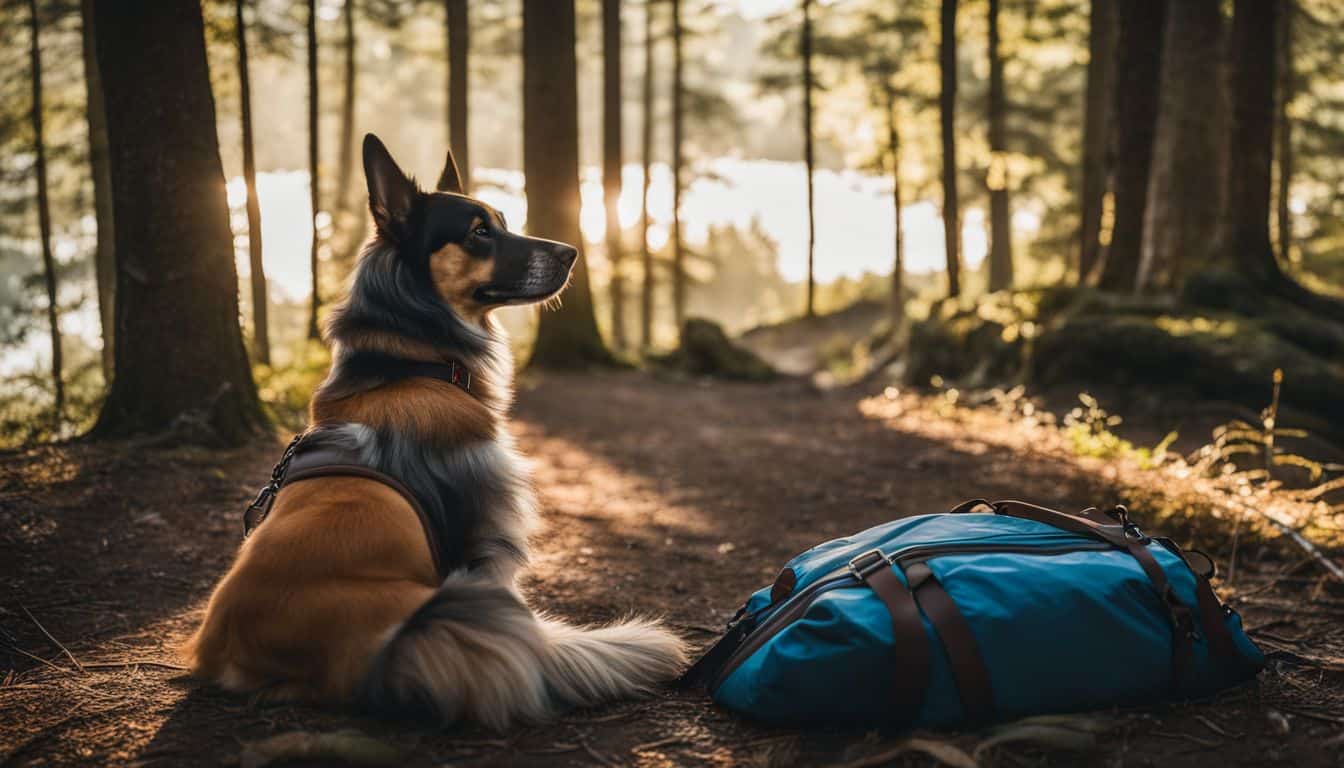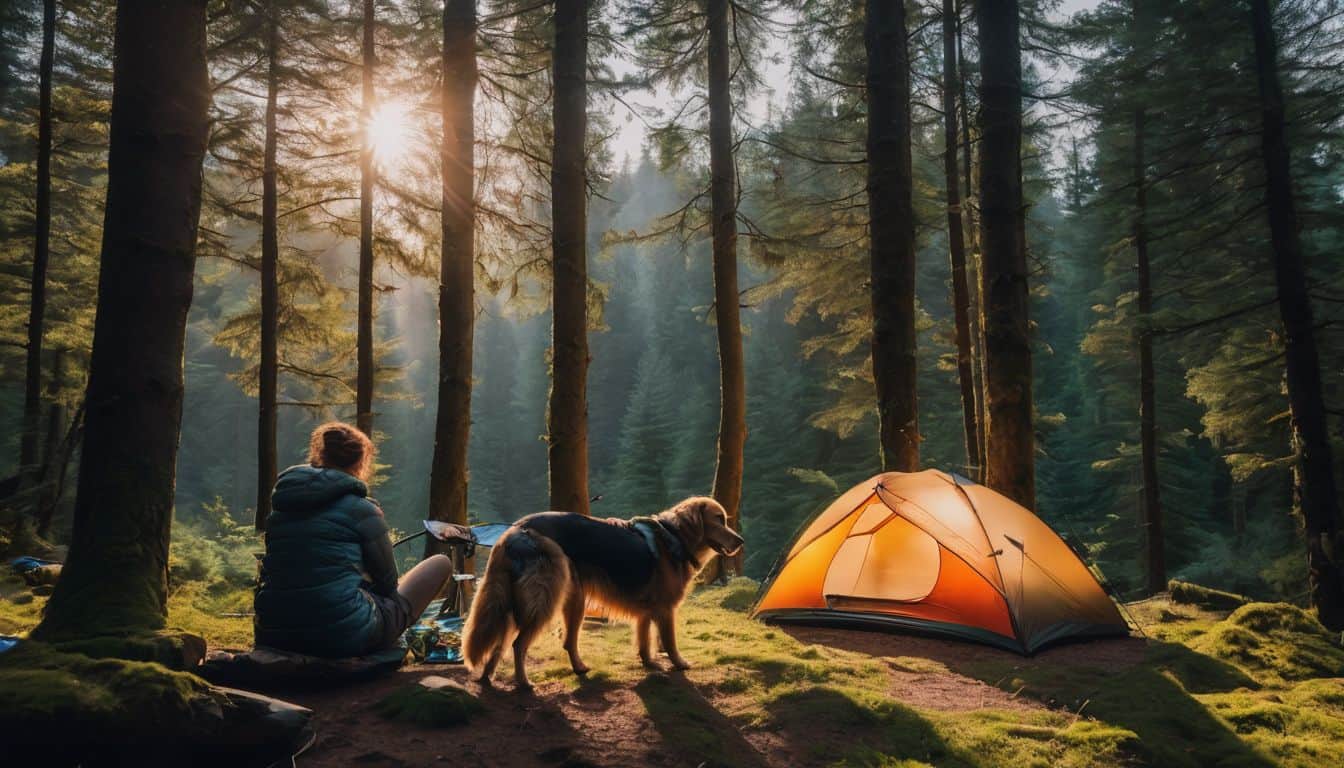Camping with your furry friend can be an incredibly rewarding experience, offering both of you the chance to explore nature together and create lasting memories. However, it’s crucial to balance the enjoyment of the great outdoors with respect for wildlife and their habitats.
This guide will help you ensure a safe and responsible camping trip with your dog while minimizing your impact on local ecosystems.
Prepare Your Dog for the Outdoors
Before embarking on your camping adventure, it’s essential to prepare your dog for the experience. Ensure your dog is well-trained in basic obedience commands, especially recall. Practice these commands in various environments to ensure your dog will respond even in an exciting and distracting outdoor setting. Start with short hikes or day trips to build your dog’s stamina and get them accustomed to spending extended periods outdoors.
It’s also important to acclimate your dog to camping gear and tents at home. Set up your tent in the backyard and let your dog explore it. Introduce them to sleeping bags, camping chairs, and other equipment they’ll encounter on your trip. This will help reduce anxiety when you’re at the actual campsite.
For more ideas on activities for dogs while camping, check out our comprehensive guide, which offers a range of engaging and safe activities for your canine companion.

Understand Local Wildlife
Research the wildlife native to your camping area before your trip. Learn about potential dangers such as bears, snakes, or porcupines, and understand how to react in case of wildlife encounters. This knowledge will help you make informed decisions to keep both your dog and local wildlife safe.
Consider carrying a wildlife guidebook or downloading a wildlife identification app to help you recognize different species and their behaviors.
Keep Your Dog Under Control
One of the most important aspects of camping with dogs is keeping them under control at all times. Always keep your dog on a leash, typically 6 feet or less in length. A harness can provide better control than a collar alone, especially for larger or more energetic dogs.
Never let your dog chase or harass wildlife, as this can cause stress to animals and potentially lead to dangerous situations. If your dog is particularly excitable around wildlife, consider using a head halter for additional control during walks or hikes.
Respect Wildlife Boundaries
Observing wildlife from a distance is one of the joys of camping, but it’s crucial to maintain that distance. Do not allow your dog to approach, feed, or interact with wild animals. Stay on designated trails to avoid disturbing habitats and nesting areas. Remember, we are visitors in their home.
Use binoculars or a zoom lens to get a closer look at wildlife without encroaching on their space. This not only protects the animals but also ensures your dog’s safety and that of you.
Manage Food and Waste
Proper food management is crucial when camping in wildlife areas. Store all food, including dog food, in secure, wildlife-proof containers or bear canisters. Never leave food unattended at your campsite, as this can attract animals and create dangerous situations.
Properly dispose of waste, including dog waste, in designated areas. This helps prevent the spread of disease and maintains the natural balance of the ecosystem. Consider bringing biodegradable waste bags to minimize your environmental impact.
Minimize Noise
Train your dog to be quiet on command and discourage excessive barking, especially at night. Be mindful of your own noise levels as well. Excessive noise can disturb wildlife, affecting their natural behaviors and potentially driving them away from their habitats.
Use positive reinforcement techniques to reward your dog for quiet behavior. If your dog tends to bark at unfamiliar sounds, consider bringing a white noise machine or playing soft music to mask outdoor noises that might trigger barking.
Be Aware of Scent
Remember that your dog’s scent can disturb wildlife. Avoid areas where animals are known to den or nest. Clean up any dog waste promptly and thoroughly to minimize your impact on the local environment.
Consider using unscented products for both you and your dog to reduce your olfactory footprint in the wilderness. This includes using unscented dog shampoo and avoiding heavily scented personal care products.
Protect Your Dog
While focusing on protecting wildlife, don’t forget to protect your dog as well. Keep vaccinations up-to-date and use appropriate flea, tick, and heartworm prevention. Bring a pet first-aid kit for any emergencies that might arise during your trip.
Familiarize yourself with common outdoor hazards for dogs, such as toxic plants, sharp rocks, or extreme temperatures. Consider getting your dog a reflective vest or collar for better visibility during early morning or evening walks.
Educate Others
Share your knowledge about responsible pet camping with fellow campers. Lead by example in wildlife respect and conservation. Your actions can inspire others to be more mindful of their impact on nature.
If you encounter other campers who seem unaware of proper wildlife etiquette, consider gently sharing your knowledge in a friendly, non-confrontational manner. Many people are simply unaware of the impact their actions can have on wildlife and are open to learning.
Leave No Trace
Follow Leave No Trace principles, including picking up after your dog. Leave natural objects and cultural artifacts undisturbed. Minimize campfire impacts by using established fire rings and fully extinguishing fires before leaving your site or going to sleep. Teach your dog to stay on trails and avoid trampling vegetation. Consider bringing a small trowel to bury dog waste if you’re in an area without designated waste disposal facilities.
Remember, as a dog owner, you have a responsibility to ensure your pet doesn’t negatively impact the natural environment or its inhabitants. By following these guidelines, you can enjoy a fulfilling camping experience with your dog while preserving the beauty and integrity of wildlife habitats for future generations.
For more information on finding the perfect spot for your adventure, check out our guide to dog-friendly camping sites. This resource can help you identify campgrounds that not only welcome dogs but also have amenities and policies that support responsible pet ownership in natural settings.

Conclusion
With proper planning and respect for nature, camping with your dog can be an unforgettable experience that strengthens your bond while fostering a deeper appreciation for the natural world. It’s an opportunity to teach your dog new skills, expose them to new environments, and create memories that will last a lifetime.
By being a responsible pet owner and steward of the environment, you’re not only ensuring a positive experience for yourself and your dog but also preserving these natural spaces for future generations of campers and wildlife alike.

Leave a Reply